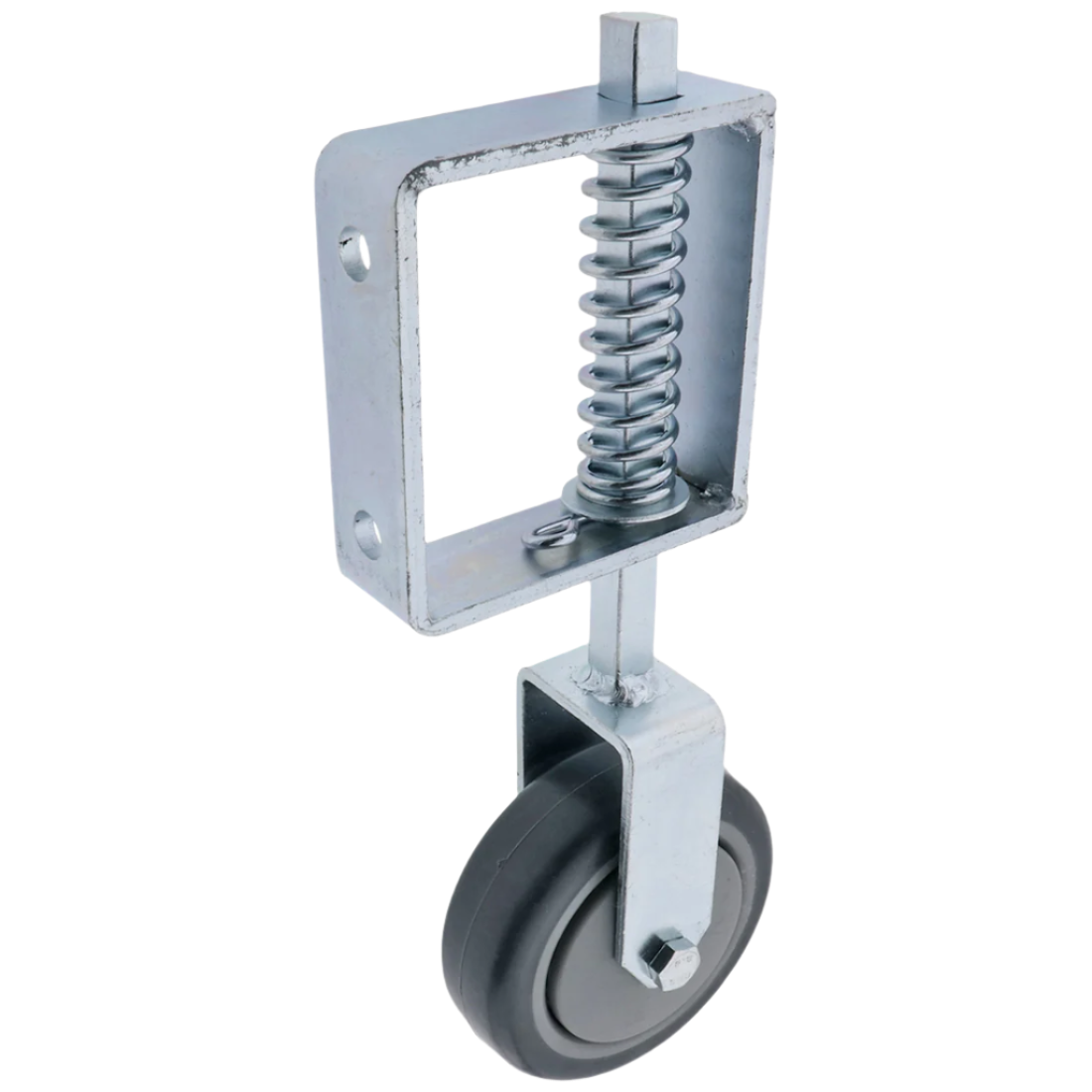How to Stop a Gate from Sagging: 4 Simple Solutions
A sagging gate can be frustrating. It can drag on the ground, struggle to close, or even become a security issue over time. Luckily, fixing or preventing gate sagging isn’t too hard if you know the right steps. In this blog, we’ll explore four practical solutions to keep your gate straight and functioning smoothly: using longer hinges, adding diagonal reinforcement, installing a gate castor, and adding a double hinge at the top to counter the rotation.
1. Use Longer Hinges Like Strap Hinges

One of the most effective ways to stop a gate from sagging is by using longer hinges, like strap hinges. These hinges run further along the gate, distributing the weight more evenly.
For gates that are wide or heavy, strap hinges are ideal because they give extra support and stability. Instead of just holding the gate up at one point (like smaller hinges), they strengthen the entire frame, keeping it from tilting over time.
When to use them:
- If your gate is large or heavy.
- If you're noticing strain on the current hinges, particularly at the top.
Why it works: Longer hinges provide more surface area to support the gate’s weight, preventing the sagging that occurs with smaller hinges.
2. Add a Diagonal Reinforcement to Brace the Gate
Another effective method to stop sagging is by adding diagonal bracing. A simple wooden or metal brace in the shape of a diagonal can do wonders to strengthen your gate. The direction of this brace matters—a lot.

Why the direction of the brace matters: The diagonal brace should run from the bottom hinge side to the top corner opposite it. This design helps counteract the natural pull of gravity, which tends to pull the outer edge of the gate downward. When the brace is installed this way, it transfers the weight back toward the hinge, effectively keeping the gate from sagging.
How to install a diagonal brace:
- Start from the bottom hinge side.
- Secure the brace up to the top corner on the latch side.
- Use screws or bolts to fasten the brace securely in place.
This simple structural reinforcement can be added to most gates and will give it the necessary strength to stand tall.
3. Install a Gate Castor
If your gate is particularly heavy or if you want extra support, installing a gate castor (also known as a gate wheel) can make a big difference. A castor is a small wheel mounted on the bottom of the gate. It bears some of the gate’s weight, reducing the load on the hinges and preventing sagging.
Why install a gate castor:
- Reduces strain on the gate's hinges.
- Provides smoother opening and closing, especially for larger gates.
- It’s ideal for gates on uneven or sloped ground, where sagging is more common.
How to install a gate castor:
- Attach the castor to the bottom of the gate on the side opposite the hinges.
- Ensure that the wheel touches the ground lightly without lifting the gate.
The castor rolls as the gate opens and closes, taking on some of the weight and making the gate easier to move while preventing sagging.
4. Add a Double Hinge at the Top to Counter Rotation
For extra support and to combat the rotational forces that lead to sagging, installing a double hinge at the top of the gate can be a game-changer. The double hinge helps distribute the weight more evenly and counteracts the twisting that can occur, particularly with heavier gates.
Why a double hinge works:
- It prevents the gate from twisting or rotating over time.
- Offers additional support at the top, where much of the strain happens.
- Distributes the gate's weight between two points instead of one, making it more stable.
How to install a double hinge:
- Position the second hinge directly above or below the existing top hinge.
- Make sure both hinges are aligned correctly for smooth operation.
By adding a second hinge at the top, you're giving the gate extra support and minimizing the rotational pull that often leads to sagging.
Final Thoughts
A sagging gate doesn’t have to be a permanent issue. By using longer hinges like strap hinges, adding a properly positioned diagonal brace, installing a gate castor, and adding a double hinge at the top, you can stop your gate from sagging and keep it functioning like new for years to come. Whether you’re building a new gate or fixing an old one, these simple solutions will help you avoid the hassle of dealing with a droopy gate in the future.






